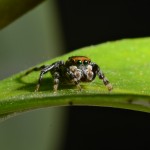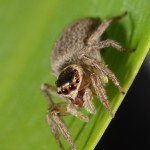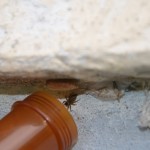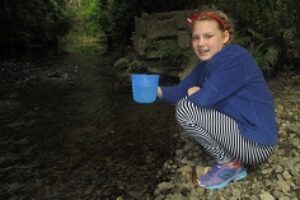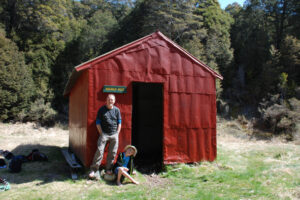From a fear of spiders to a career in them. Arachnologist, Fiona Cross talks to us about working with these fascinating little critters.
When I grew up, I knew that I wanted to be a Zoologist (a scientist who studies animal biology), but I never thought I’d ever work with spiders! I used to be very afraid of them. A fear of spiders is known as arachnophobia, and I used to scream every time I saw one of these animals. Over time, though, I gradually learned more about spiders and now I like them a lot. I no longer feel afraid of them. In fact, I am currently working as an arachnologist (a scientist who studies spiders) at the University of Canterbury.
Learning about spiders can help us to better understand how important these animals really are. The world would be a very different place without them! There are over 45,000 known spider species around the world, living on every continent except Antarctica. There are lots of interesting spiders in New Zealand, but most of my work at the moment is actually based on studying the behaviour of some jumping spiders that live in Kenya. These animals may be very small and have tiny brains, but some use amazing strategies to capture their prey.
Even people who are afraid of spiders may agree that jumping spiders are actually rather cute. These little animals are harmless to people and they have eight eyes, including two big eyes at the front. There are over 5,800 known species of jumping spider and they are found in most places around the world, even Mount Everest! They vary in shape and size, and some are even covered in amazingly bright colours. But regardless of what a jumping spider looks like, there is one good way of telling you have found one. All you have to do is stare at a spider. If it turns and looks back at you with its two big eyes at the front, you have spotted one!
These two big eyes are called ‘principal eyes’. Most other spiders see very poorly, but principal eyes help jumping spiders to see in some detail. This means that when a jumping spider turns to look at you, it really can see you! The other six eyes are called the ‘secondary eyes’. Secondary eyes are smaller and help jumping spiders to see movement.
We have jumping spiders in New Zealand and they can be found in many places such as in our backyards, schools and parks. Many New Zealanders are familiar with the ‘house hopper’ spider (scientific name: Hypoblemum albovittatum) which, as you may have guessed, is often found around houses. This means that it’s possible to learn about jumping spiders right where we live!
Finding and catching jumping spiders
One of the joys of being an arachnologist is going into the field to collect spiders. It’s just like going on a treasure hunt. Sometimes, you find many spiders and even new species. Other times, you don’t find many spiders at all. It does take some time and patience to search for spiders and here are some tips for how we collect jumping spiders.
Mornings are usually the best time to go collecting, since jumping spiders may be less active and harder to find when it gets hotter later in the day.
A good spider to search for in New Zealand is the ‘house hopper’, which you may notice running across the outside walls of buildings. Other times, you may spot little silken nests in the nooks and crannies on outside walls. A house hopper may be resting inside one of these nests. I have also had success with finding house hoppers on a wood pile in my backyard and on the long leaves of some plants, such as an Agapanthus.
You may prefer using disposable gloves if you are searching for spiders on plants, especially if you suffer from allergies.
Move very slowly and be gentle if you want to capture a jumping spider. They have good eyesight and will run away if they notice sudden movement.
Be especially gentle if you want to coax a spider out of its nest. I find it very helpful to use a small paint brush to lightly touch the nest. You may notice a small dark shape moving around inside the nest. The spider will escape its nest if you keep touching the silk.
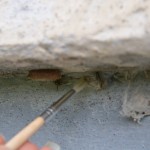
Using a paint brush to coax a house hopper (Hypoblemum albovittatum) out of its nest. Photo Fiona Cross
A small paint brush is also very useful for brushing a spider into a small container. Hold the container in front of the spider and then gently brush the spider from behind.
After collecting a spider, it’s a good idea to also put a small leaf in the container. The leaf can provide the spider with some moisture, which is helpful if you’re going to be outside for a long period of time.
You might also like to watch how a jumping spider captures its prey. Most jumping spiders don’t build webs but they actually hunt for their prey just like tiny cats. To see this, put the spider in a large jar and try collecting an insect, such as a fly, that is not bigger than the spider. Once you have put the insect in the jar, watch how the spider stalks and then pounces on its prey. This may take some time, but you will see how jumping spiders got their name!
Once you have finished looking at the spider you have collected, it is best to release it back where you found it.


